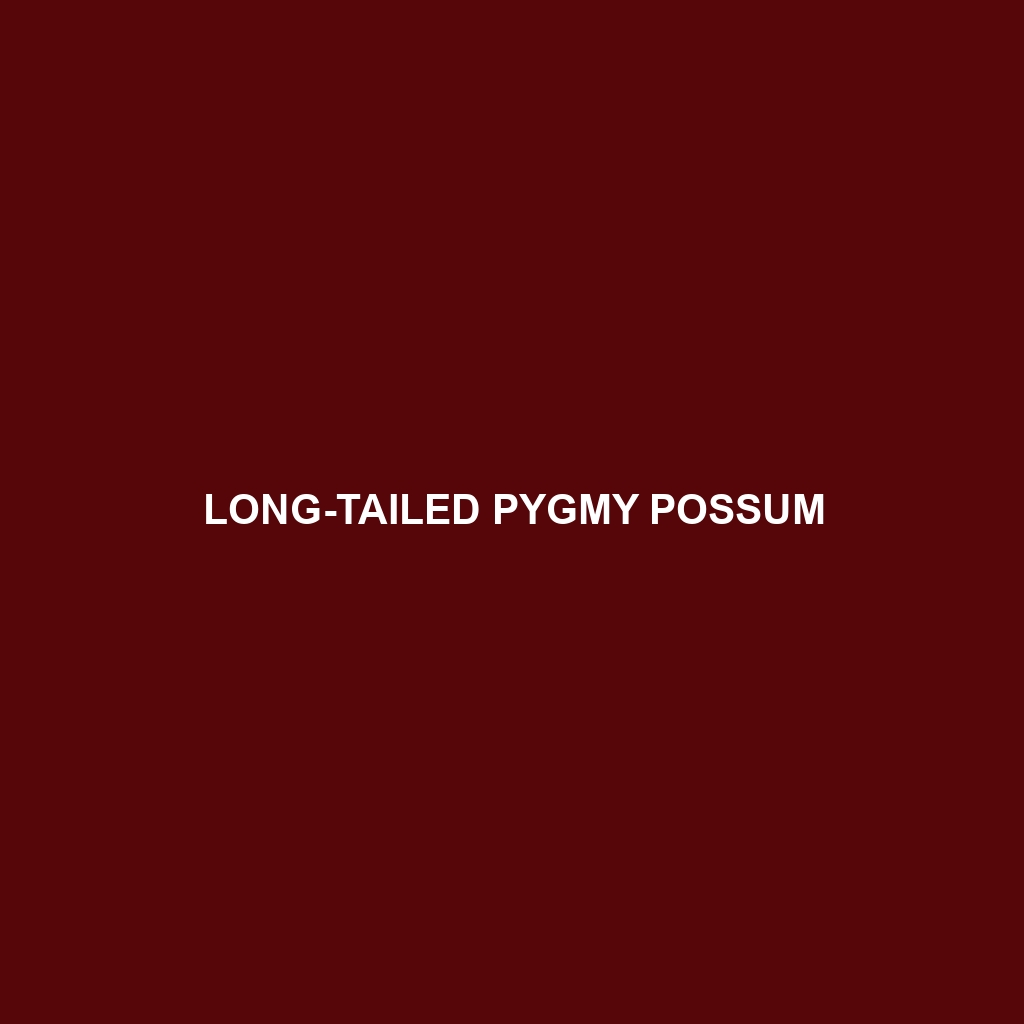Long-tailed Pygmy Possum: A Detailed Overview
The Long-tailed Pygmy Possum (Cercartetus caudatus) is one of the smallest marsupials in the world, characterized by its minuscule size, distinctive long tail, and captivating nocturnal habits. Native to the forests of Australia and Papua New Guinea, this diminutive creature is an adept climber, using its tail for balance and support. Despite its tiny stature, the Long-tailed Pygmy Possum plays a significant role in its ecosystem, from pollinating plants to serving as prey for larger animals.
Physical Characteristics:
Size: The Long-tailed Pygmy Possum measures about 7-10 cm (2.8-3.9 inches) in body length, with its tail often longer than its body, reaching up to 14 cm (5.5 inches).
Coloration: Their fur is generally a soft grey or brown on the dorsal side, with a whitish or cream-colored underbelly. This coloration helps them blend into their arboreal surroundings.
Special Features: Their most notable feature is their elongated prehensile tail, which is naked and scaly towards the tip, aiding in grasping branches and climbing. They have large, forward-facing eyes adapted for night vision, and their ears are big and rounded, enhancing their sense of hearing.
Behavior:
Social Interactions: Long-tailed Pygmy Possums are generally solitary creatures, coming together only for breeding. However, they are known to be somewhat social during colder months, huddling together for warmth.
Feeding Habits: These possums are omnivorous but have a preference for nectar and pollen, making them important pollinators. They also feed on fruits, insects, and small invertebrates.
Ecological Roles: As nectar feeders, they play a crucial role in pollinating various plant species, including those of the Myrtaceae family. Their diet also helps control insect populations.
Habitat:
Natural Habitat: They inhabit a variety of forest environments, including rainforests, sclerophyll forests, and woodlands. They are most commonly found in dense, moist forests where there is plenty of vegetation and tree cover.
Adaptations: Their small size and agility allow them to navigate the forest canopy with ease. The prehensile tail provides stability when climbing, and their sharp claws aid in gripping bark and branches.
Adaptations:
For Arboreal Life: Their prehensile tail is a significant adaptation for life in the trees, providing balance and grip. Their sharp claws and padded feet enhance their climbing abilities.
Nectar Feeding: A specialized tongue allows them to efficiently lap up nectar from flowers, while their keen sense of smell helps them locate food sources.
Conservation Status:
Current Status: The conservation status of the Long-tailed Pygmy Possum varies by region but is generally listed as Least Concern. However, habitat destruction and fragmentation pose significant threats to their populations.
Threats: Deforestation, climate change, and predation by introduced species such as cats and foxes are major threats. Conservation efforts focus on habitat preservation and protecting forest ecosystems.
Fun Facts:
1. Hibernation: In colder climates, Long-tailed Pygmy Possums can enter a state of torpor, reducing their metabolic rate to conserve energy.
2. Communication: They communicate using a variety of vocalizations, including clicks and chirps, especially during the breeding season.
3. Reproduction: Female possums have a well-developed pouch where they carry and nurse their young until they are old enough to fend for themselves.
4. Longevity: Despite their small size, they can live for up to 5 years in the wild under optimal conditions.
The Long-tailed Pygmy Possum is a fascinating example of the diversity and adaptability of marsupials. Their intricate behaviors, ecological significance, and unique adaptations make them a captivating subject for study and conservation.
